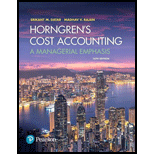
Nonfinancial variances. Kathy’s Kettle Potato Chips produces gourmet chips distributed to chain sub shops throughout California. To ensure that their chips are of the highest quality and have taste appeal, Kathy has a rigorous inspection process. For quality control purposes, Kathy has a standard based on the number of pounds of chips inspected per hour and the number of pounds that pass or fail the inspection.
Kathy expects that for every 1,000 pounds of chips produced, 200 pounds of chips will be inspected. Inspection of 200 pounds of chips should take 1 hour. Kathy also expects that 1% of the chips inspected will fail the inspection. During the month of May, Kathy produced 113,000 pounds of chips and inspected 22,300 pounds of chips in 120 hours. Of the 22,300 pounds of chips inspected, 215 pounds of chips failed to pass the inspection.
- A. Compute two variances that help determine whether the time spent on inspections was more or less than expected. (Follow a format similar to the one used for the variable overhead spending and efficiency variances, but without prices.)
Required
- B. Compute two variances that can be used to evaluate the percentage of the chips that fails the inspection.
Want to see the full answer?
Check out a sample textbook solution
Chapter 8 Solutions
Horngren's Cost Accounting: A Managerial Emphasis (16th Edition)
- Wildcat Pizza, Inc. produces batches of frozen pizzas to sell at a variety of grocery stores throughout the country. Standard cost information for each batch is presented as follows: Direct materials $60.00 Direct labor 40.00 Variable overhead 30.00 Total $130.00 Wildcat produced and sold 100,000 batches for the year and encountered the following production variances: Direct materials price variance (300,000) Favorable Direct materials quantity variance 290,000 Unfavorable Direct labor rate variance (170,000) Favorable Direct labor efficiency variance (140,000) Favorable Variable overhead spending variance 150,000 Unfavorable Variable overhead efficiency variance (210,000) Favorable Total variable production cost variance (380,000) Favorable Company policy is to investigate all unfavorable variances above 5 percent of the flexible budget amount for direct materials, direct labor, and variable overhead.arrow_forwardWildcat Pizza, Inc. produces batches of frozen pizzas to sell at a variety of grocery stores throughout the country. Standard cost information for each batch is presented as follows: Direct materials $60.00 Direct labor 40.00 Variable overhead 30.00 Total $130.00 Wildcat produced and sold 100,000 batches for the year and encountered the following production variances: Direct materials price variance (300,000) Favorable Direct materials quantity variance 290,000 Unfavorable Direct labor rate variance (170,000) Favorable Direct labor efficiency variance (140,000) Favorable Variable overhead spending variance 150,000 Unfavorable Variable overhead efficiency variance (210,000) Favorable Total variable production cost variance (380,000) Favorable Company policy is to investigate all unfavorable variances above 5 percent of the flexible budget amount for direct materials, direct labor, and variable…arrow_forwardMaterials and labor variances Branca Inspections Inc. specializes in determining whether a building or houses drainpipes are properly tied into the citys sewer system. The company pours colored chemical through the pipes and collects an inspection sample from each outlet, which is then analyzed. Each job should take 15 hours for each of four inspectors, at a standard rate of 18 per hour. Each job requires a standard quantity of 5 gallons of Glow (a colored chemical), which should cost 25 per gallon. Data from the companys most recent job (a building) follow: Required: Compute the following variances, using the formulas on pages 421422 and 424: 1. Materials price and quantity variances. 2. Labor rate and efficiency variances.arrow_forward
- Dog Bone Bakery, which bakes dog treats, makes a special biscuit for dogs. Each biscuit uses 0.75 cup of pure semolina flour. They buy 4,000 cups of flour at $0.55 per cup. They use 3,550 cups of flour to make 4,750 biscuits. The standard cost per cup of flour is $0.53. A. What are the direct materials price variance, the direct materials quantity variances, and the total direct materials cost variance? B. What is the standard cost per biscuit for the semolina flour?arrow_forwardThe management of Golding Company has determined that the cost to investigate a variance produced by its standard cost system ranges from 2,000 to 3,000. If a problem is discovered, the average benefit from taking corrective action usually outweighs the cost of investigation. Past experience from the investigation of variances has revealed that corrective action is rarely needed for deviations within 8% of the standard cost. Golding produces a single product, which has the following standards for materials and labor: Actual production for the past 3 months follows, with the associated actual usage and costs for materials and labor. There were no beginning or ending raw materials inventories. Required: 1. What upper and lower control limits would you use for materials variances? For labor variances? 2. Compute the materials and labor variances for April, May, and June. Identify those that would require investigation by comparing each variance to the amount of the limit computed in Requirement 1. Compute the actual percentage deviation from standard. Round all unit costs to four decimal places. Round variances to the nearest dollar. Round variance rates to three decimal places so that percentages will show to one decimal place. 3. CONCEPTUAL CONNECTION Let the horizontal axis be time and the vertical axis be variances measured as a percentage deviation from standard. Draw horizontal lines that identify upper and lower control limits. Plot the labor and material variances for April, May, and June. Prepare a separate graph for each type of variance. Explain how you would use these graphs (called control charts) to assist your analysis of variances.arrow_forwardBuenolorl Company produces a well-known cologne. The standard manufacturing cost of the cologne is described by the following standard cost sheet: Management has decided to investigate only those variances that exceed the lesser of 10% of the standard cost for each category or 20,000. During the past quarter, 250,000 four-ounce bottles of cologne were produced. Descriptions of actual activity for the quarter follow: a. A total of 1.35 million ounces of liquids was purchased, mixed, and processed. Evaporation was higher than expected. (No inventories of liquids are maintained.) The price paid per ounce averaged 0.42. b. Exactly 250,000 bottles were used. The price paid for each bottle was 0.048. c. Direct labor hours totaled 48,250, with a total cost of 733,000. Normal production volume for Buenolorl is 250,000 bottles per quarter. The standard overhead rates are computed by using normal volume. All overhead costs are incurred uniformly throughout the year. (Note: Round unit costs to the nearest cent and total amounts to the nearest dollar.) Required: 1. Calculate the upper and lower control limits for materials and labor. 2. Compute the total materials variance, and break it into price and usage variances. Would these variances be investigated? 3. Compute the total labor variance, and break it into rate and efficiency variances. Would these variances be investigated?arrow_forward
- Uchdorf Manufacturing just completed a study of its purchasing activity with the objective of improving its efficiency. The driver for the activity is number of purchase orders. The following data pertain to the activity for the most recent year: Activity supply: five purchasing agents capable of processing 2,400 orders per year (12,000 orders) Purchasing agent cost (salary): 45,600 per year Actual usage: 10,600 orders per year Value-added quantity: 7,000 orders per year Required: 1. Calculate the volume variance and explain its significance. 2. Calculate the unused capacity variance and explain its use. 3. What if the actual usage drops to 9,000 orders? What effect will this have on capacity management? What will be the level of spending reduction if the value-added standard is met?arrow_forwardCortez Manufacturing, Inc. has the following flexible budget formulas and amounts: Actual results for May for the production and sale of 5,000 units were as follows: Prepare a performance report for May that includes the identification of the favorable and unfavorable variances.arrow_forwardVet-Pro, Inc., produces a veterinary grade anti-anxiety mixture for pets with behavioral problems. Two chemical solutions, Aranol and Lendyl, are mixed and heated to produce a chemical that is sold to companies that produce the anti-anxiety pills. The mixture is produced in batches and has the following standards: During March, the following actual production information was provided: Required: 1. Compute the direct materials mix and yield variances. 2. Compute the total direct materials usage variance for Aranol and Lendyl. Show that the total direct materials usage variance is equal to the sum of the direct materials mix and yield variances.arrow_forward
- Ed Co. manufactures two types of O rings, large and small. Both rings use the same material but require different amounts. Standard materials for both are shown. At the beginning of the month, Edve Co. bought 25,000 feet of rubber for $6.875. The company made 3,000 large O rings and 4,000 small O rings. The company used 14,500 feet of rubber. A. What are the direct materials price variance, the direct materials quantity variance, and the total direct materials cost variance? B. If they bought 10,000 connectors costing $310, what would the direct materials price variance be for the connectors? C. If there was an unfavorable direct materials price variance of $125, how much did they pay per toot for the rubber?arrow_forwardIn all of the exercises involving variances, use F and U to designate favorable and unfavorable variances, respectively. E8-1 through E8-5 use the following data: The standard operating capacity of Tecate Manufacturing Co. is 1,000 units. A detailed study of the manufacturing data relating to the standard production cost of one product revealed the following: 1. Two pounds of materials are needed to produce one unit. 2. Standard unit cost of materials is 8 per pound. 3. It takes one hour of labor to produce one unit. 4. Standard labor rate is 10 per hour. 5. Standard overhead (all variable) for this volume is 4,000. Each case in E8-1 through E8-5 requires the following: a. Set up a standard cost summary showing the standard unit cost. b. Analyze the variances for materials and labor. c. Make journal entries to record the transfer to Work in Process of: 1. Materials costs 2. Labor costs 3. Overhead costs (When making these entries, include the variances.) d. Prepare the journal entry to record the transfer of costs to the finished goods account. Standard unit cost; variance analysis; journal entries 1,000 units were started and finished. Case 1: All prices and quantities for the cost elements are standard, except for materials cost, which is 8.50 per pound. Case 2: All prices and quantities for the cost elements are standard, except that 1,900 lb of materials were used.arrow_forwardKavallia Company set a standard cost for one item at 328,000; allowable deviation is 14,500. Actual costs for the past six months are as follows: Required: 1. Calculate the variance from standard for each month. Which months should be investigated? 2. What if the company uses a two-part rule for investigating variances? The allowable deviation is the lesser of 4 percent of the standard amount or 14,500. Now which months should be investigated?arrow_forward
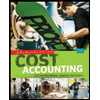 Principles of Cost AccountingAccountingISBN:9781305087408Author:Edward J. Vanderbeck, Maria R. MitchellPublisher:Cengage Learning
Principles of Cost AccountingAccountingISBN:9781305087408Author:Edward J. Vanderbeck, Maria R. MitchellPublisher:Cengage Learning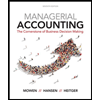 Managerial Accounting: The Cornerstone of Busines...AccountingISBN:9781337115773Author:Maryanne M. Mowen, Don R. Hansen, Dan L. HeitgerPublisher:Cengage LearningPrinciples of Accounting Volume 2AccountingISBN:9781947172609Author:OpenStaxPublisher:OpenStax College
Managerial Accounting: The Cornerstone of Busines...AccountingISBN:9781337115773Author:Maryanne M. Mowen, Don R. Hansen, Dan L. HeitgerPublisher:Cengage LearningPrinciples of Accounting Volume 2AccountingISBN:9781947172609Author:OpenStaxPublisher:OpenStax College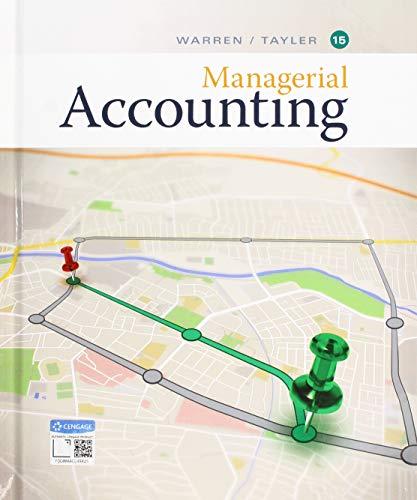 Managerial AccountingAccountingISBN:9781337912020Author:Carl Warren, Ph.d. Cma William B. TaylerPublisher:South-Western College Pub
Managerial AccountingAccountingISBN:9781337912020Author:Carl Warren, Ph.d. Cma William B. TaylerPublisher:South-Western College Pub Financial And Managerial AccountingAccountingISBN:9781337902663Author:WARREN, Carl S.Publisher:Cengage Learning,
Financial And Managerial AccountingAccountingISBN:9781337902663Author:WARREN, Carl S.Publisher:Cengage Learning,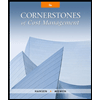 Cornerstones of Cost Management (Cornerstones Ser...AccountingISBN:9781305970663Author:Don R. Hansen, Maryanne M. MowenPublisher:Cengage Learning
Cornerstones of Cost Management (Cornerstones Ser...AccountingISBN:9781305970663Author:Don R. Hansen, Maryanne M. MowenPublisher:Cengage Learning





